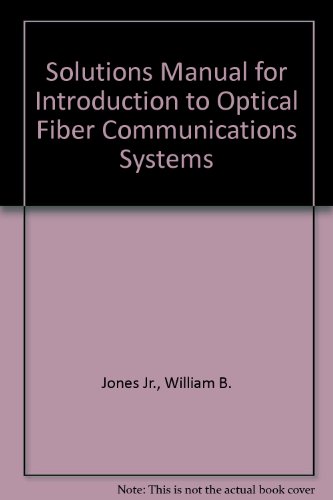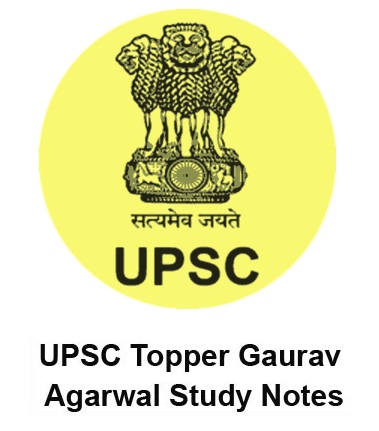Anant Agrawal Solution Manual
Hi, I'm currently reading the book named 'Foundations of A&D Electronic Circuits', written by Jeffrey Lang and Anant Agarwal, two teachers from the MIT. I'm reading this book because I stumbled upon their 'Introduction to electronics' course (6.002 on OpenCourseWare) and it had full-length videos of the course (awesome!) I bought the book and I like how everything's simply explained (as good as the AllAboutCircuits book ) But there is one small problem: the solutions are missing, and I tried to compare mine (for the 1st chapter I just finished) with something on the web, but there is nothing, either on Google or on forums. My question is: is it 'morally acceptable' to post my solutions on my website. I'm fairly confident that my calculus is correct, and Wikipedia agrees with me (I have added most of the proofs to my solutions, with ∫, √, and other things). As for the 'teachers' of the forum, how would you react to such a website?
Thank you for reading. Click to expand.Personally, I would only do this with the permission of the authors and the publisher. In order to post solutions, you need to post the questions too (ideally), and that is from their work. They may have even published their own solutions manual.

If they approve, it should be OK. Perhaps, it's legal to do it anyway because you are only quoting a small portion of the book and it may fall under 'fair-use', I'm not sure. But, you asked if it was moral, and personally I wouldn't find it moral without permission.
Click to expand. As good as the AAC book? How could this conceivably be possible?
Foundations is indeed a wonderful resource, as is 'The Art of Electronics.' In fact, I used them as models for how I SHOULD write my course notes. Not there by a long shot yet, though. If you were to just take a few sample questions and show how you arrived at the solution, you'd probably be safe under 'fair use' clause of copyright. However, to do the entire solution set wholesale.that's a different matter.
Maths Rs Agrawal Solution
You'd definitely need permission to do this.but quite likely would obtain it with no difficulty. Anything that creates further discussion of a book is usually good for the author! Audience digital system designers; analog and digital circuit designers; Contents 1 The Circuit Abstraction 2 Resistive Networks 3 Network Theorems 4 Analysis of Nonlinear Circuits 5 The Digital Abstraction 6 The MOSFET Switch 7 The MOSFET Amplifier 8 The Small Signal Model 9 Energy Storage Elements 10 First-order Transients 11 Energy and Power in Digital Circuits 12 Transients in Second Order Circuits 13 Sinusoidal Steady State 14 Sinusoidal Steady State: Resonance 15 The Operational Amplifier Abstraction 16 Diodes.

X Exclude words from your search Put - in front of a word you want to leave out. For example, jaguar speed -car Search for an exact match Put a word or phrase inside quotes. For example, 'tallest building'. Search for wildcards or unknown words Put a. in your word or phrase where you want to leave a placeholder.
For example, 'largest. in the world'. Search within a range of numbers Put. Between two numbers.

For example, camera $50.$100. Combine searches Put 'OR' between each search query. For example, marathon OR race. This is one of over 2,200 courses on OCW. Find materials for this course in the pages linked along the left. MIT OpenCourseWare is a free & open publication of material from thousands of MIT courses, covering the entire MIT curriculum. No enrollment or registration.
Freely browse and use OCW materials at your own pace. There's no signup, and no start or end dates. Knowledge is your reward. Use OCW to guide your own life-long learning, or to teach others.
Solution Manual Torrent
We don't offer credit or certification for using OCW. Made for sharing. Download files for later. Send to friends and colleagues. Modify, remix, and reuse (just remember to cite OCW as the source.) Learn more. Course Features.
Course Description 6.002 is designed to serve as a first course in an undergraduate electrical engineering (EE), or electrical engineering and computer science (EECS) curriculum. At MIT, 6.002 is in the core of department subjects required for all undergraduates in EECS. The course introduces the fundamentals of the lumped circuit abstraction. Topics covered include: resistive elements and networks; independent and dependent sources; switches and MOS transistors; digital abstraction; amplifiers; energy storage elements; dynamics of first- and second-order networks; design in the time and frequency domains; and analog and digital circuits and applications. Design and lab exercises are also significant components of the course.
Solution Manual Free
6.002 is worth 4 Engineering Design Points. The 6.002 content was created collaboratively by Profs. Anant Agarwal and Jeffrey H. The course uses the required textbook Foundations of Analog and Digital Electronic Circuits.
Agarwal, Anant, and Jeffrey H. San Mateo, CA: Morgan Kaufmann Publishers, Elsevier, July 2005.
